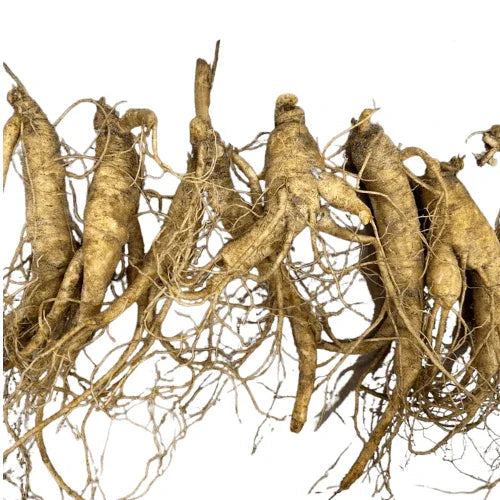
Growing Wisconsin Ginseng at Home: The Complete Guide
Wisconsin ginseng isn’t just a globally celebrated herb—it’s a connection to nature, a sustainable wellness solution, and for many, a profitable venture. Whether you're a home gardener, a small-scale farmer, or simply a fan of holistic remedies, cultivating Wisconsin ginseng can elevate your gardening experience.
This guide will walk you through everything you need to know to grow premium ginseng—from soil preparation to harvesting your first crop. Along with actionable tips, we’ll also show you how to integrate high-quality ginseng rootlets and seeds for the best results.
What Makes Wisconsin Ginseng Special?
Before we dig into the "how," it’s worth appreciating the “why.” Wisconsin ginseng has earned a name worldwide due to its uniquely potent properties. Grown in the nutrient-rich soil and cool summers of Wisconsin, this American ginseng variety is revered for its high levels of health-boosting ginsenosides, known for improving focus, boosting immunity, and reducing stress.
Thanks to over 40 years of expert farming by brands like Dairyland Ginseng, cultivating this crop has never been more accessible for individuals and small businesses alike.
Benefits of Growing Ginseng at Home
Why should you consider growing ginseng in your backyard or on your farm?
- Health Benefits: Ginseng is a holistic powerhouse, known for boosting energy, improving immunity, and aiding mental clarity.
- Sustainability: Home-growing ensures zero reliance on chemical additives and creates a direct link between you and nature.
- Profit Potential: Mature ginseng roots are highly sought after, particularly in international markets, turning a backyard garden into an income stream.
- Personal Satisfaction: Whether you grow it for your health or sell it, watching your plants thrive is incredibly rewarding.
Step-by-Step Guide to Growing Wisconsin Ginseng
1. Choose the Right Planting Material
Starting with high-quality materials is essential for long-term success. For best results, use stratified American ginseng seeds or ginseng rootlets from trusted suppliers like Dairyland Ginseng.
- Seeds are ideal if you want to start from scratch. Stratified seeds have undergone a 10-month natural dormancy process, leading to higher germination rates.
- Rootlets (2–5-year-old plants) are best for jumpstarting growth and seeing quicker results.
👉 Explore ginseng seeds and rootlets here.
2. Prepare the Soil
Ginseng thrives in well-drained, nutrient-rich soil with a slightly acidic pH between 5.5–6.0. It prefers conditions that mimic a forest floor.
- Location Matters: Pick a shaded area, ideal under a forest canopy or a shade cloth, where natural light doesn’t directly hit the soil.
- Add Organic Matter: Mix compost or leaf mulch into your soil to create a fertile, loose environment for the roots and seeds.
- Drainage First: Ensure the soil doesn’t retain excessive moisture to prevent root rot.
3. Planting Your Seeds or Rootlets
For Seeds:
- Depth & Spacing:
-
- Plant seeds about 1 inch deep, 6 inches apart.
- Ensure they’re covered but not compacted with soil.
- Timing:
-
- Plant stratified seeds in fall to allow dormancy over winter. Germination will occur in the spring.
For Rootlets:
- Depth & Placement:
-
- Dig a hole deep enough so the crown (the bud end) is ½ inch below the soil surface.
- Space rootlets 6–12 inches apart for room to grow.
- Tips:
-
- Angling the bud slightly upward gives better growth results.
Pro Tip: Always source high-quality seeds or rootlets for best yield.
4. Watering and Care
- Moderate Moisture:
-
- Ginseng prefers moist soil but doesn’t tolerate sogginess. Use a light hand with watering during dry spells.
- Mulching Magic:
-
- Add a 2-inch layer of mulch (like straw) to maintain moisture, regulate soil temperature, and suppress weeds.
- Weed Control:
-
- Regularly inspect and remove weeds so they don’t compete with your plants for resources.
5. Patience is Key
Ginseng is a slow-growing plant, often taking 5–7 years for roots to fully mature. Use this time to fine-tune your growing techniques and create ideal conditions for a bumper harvest.
6. Harvesting and Profiting
Once your ginseng roots reach maturity, it’s time to reap the rewards.
- Harvest roots gently to avoid damage. A small spade or digging fork works well.
- Clean the roots under running water without scrubbing, as the delicate ginsenosides are mainly located in the top layers.
- Dry the roots before packaging them for personal use or sale.
Frequently Asked Questions
Q1. How long does ginseng take to grow?
American Ginseng usually takes between 5–7 years to reach full maturity when started from seeds. However, rootlets significantly reduce this timeframe.
Q2. Can I grow Wisconsin ginseng indoors?
Not effectively. Ginseng requires specific soil conditions and indirect light best mimicked in an outdoor forest-like setting.
Q3. Where can I buy planting materials?
High-quality ginseng seeds and rootlets are available at Dairyland Ginseng.
Why Choose Dairyland Ginseng?
If you’re serious about growing ginseng, partnering with a trusted supplier is crucial. Here’s why Dairyland Ginseng stands apart:
- Expertise:
-
- Over 40 years of experience in premium American ginseng cultivation.
- Quality Guarantee:
-
- Handpicked seeds designed for successful germination and sustainability.
- Convenience:
-
- Free shipping on orders over $50 and complete planting guides included.
Start Your Ginseng Journey Today
Growing Wisconsin ginseng at home offers more than a plant in your backyard. It’s an opportunity to achieve sustainable wellness, start a profitable side business, or simply connect with nature in a meaningful way.
Take the first step with Dairyland Ginseng’s high-quality ginseng seeds and rootlets today. A thriving ginseng garden is just a planting season away!
